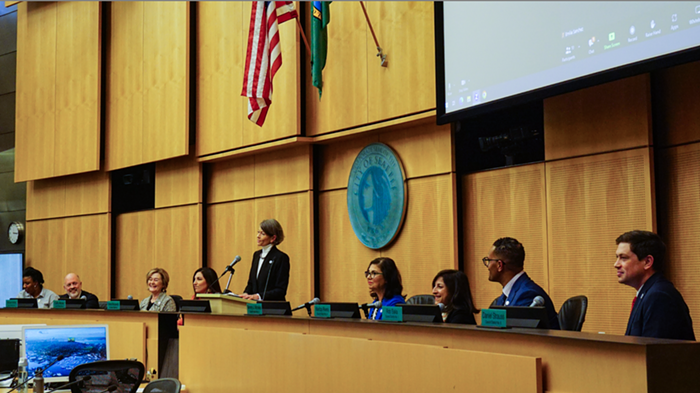
A group of indigenous activists based in Seattle launched an online campaign against tribal disenrollment—the process by which tribal governments eject their own tribal members—today. A website (stopdisenrollment.com) dedicated to the cause is collecting individual stories and photos of statements written on activists' hands.
The action's goal, according to a press release put out this morning, is to "attract representatives of all 567 federally-recognized tribes in the United States" and "ultimately attract as many participants as there are disenrolled Indians."
One of the most notorious, local tribal disenrollments in recent history has come by way of the Nooksack Tribe. In 2013, the Nooksack Tribal Council attempted to disown 306 of its 2,000 tribal members, a process that is now being disputed in court. The "Nooksack 306," as those facing disenrollment call themselves, have posted several "Stop Disenrollment" messages on the group's Facebook page today, along with the hashtag #WeBelong.
Gabriel Galanda, a Nomlaki/Concow lawyer fighting the Nooksack disenrollment, has called the trend of disenrollments an "epidemic." While Galanda has pointed out that disenrollments often afflict gaming tribes whose profits are shared among tribal members, the lawyer is also drawing attention to disenrollment's historical roots. In an op-ed for Indian Country Today Media Network, he explained more:
The United States originally taught disenrollment to American indigenous peoples as a mode of Indian assimilation. Indian “rolls” and removal from those rolls were introduced to indigenous peoples in the 1800s, chiefly to dispossess tribal communities of land through allotment. By the 1930s “disenrollment” was imparted to tribal governments under guise of Indian reorganization, via boilerplate tribal constitutions. And, like whiskey and smallpox blankets in times before, the federal government also introduced “membership” and “blood quantum” to American indigenous peoples.
Several famous Stop Disenrollment activists have posted messages with similar themes. Louie Gong, the Seattle-based Nooksack artist (he crafted the bentwood box gifted to Chinese president Xi Jinping during the president's visit to Seattle), posted a photo of himself on the Stop Disenrollment website with the words, "colonial dreams come true" written on his palm. Winona LaDuke, an environmental activist and Anishinaabekwe member of the Mississippi Band Anishinaabeg, posted a photo with the word "theft."
Check out the full website here.


















